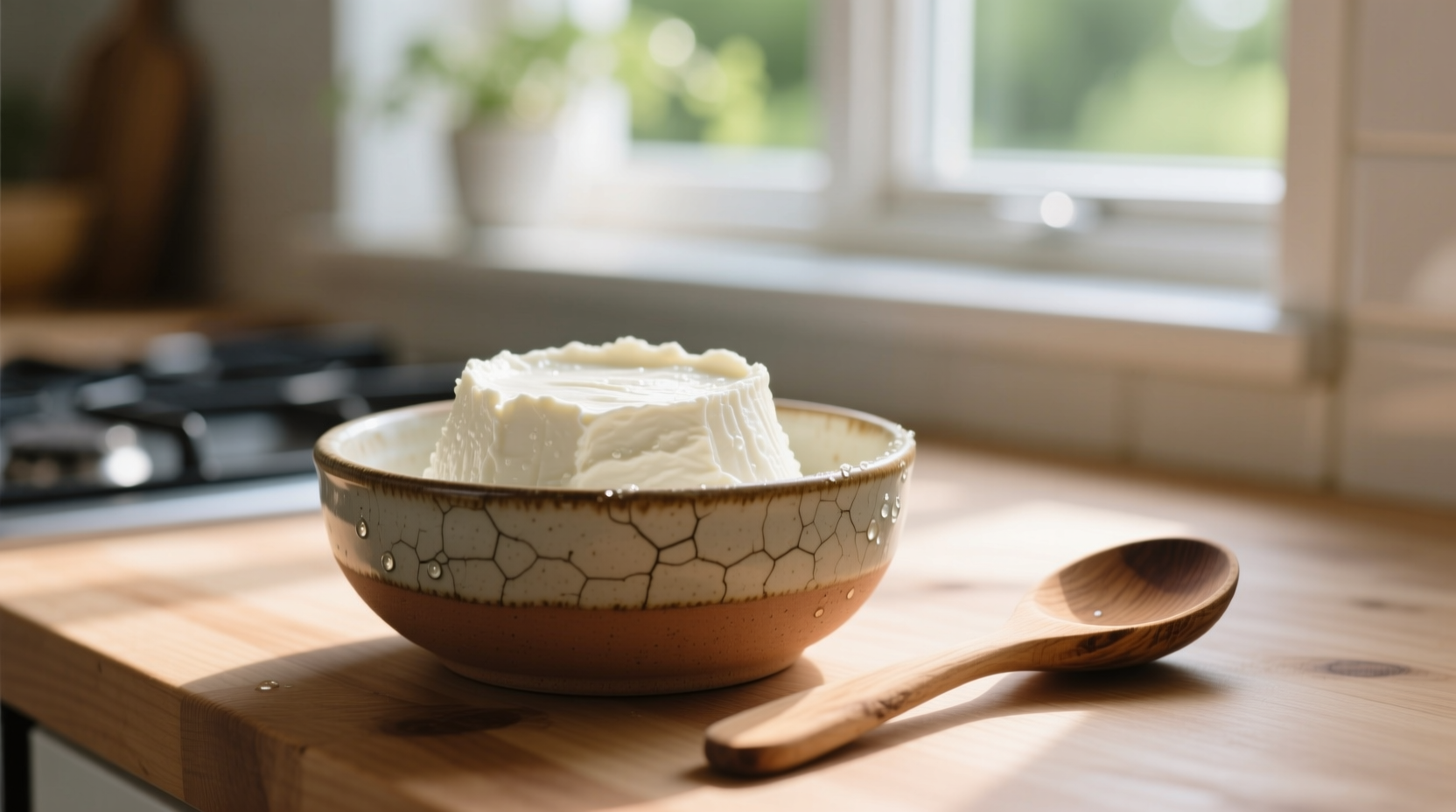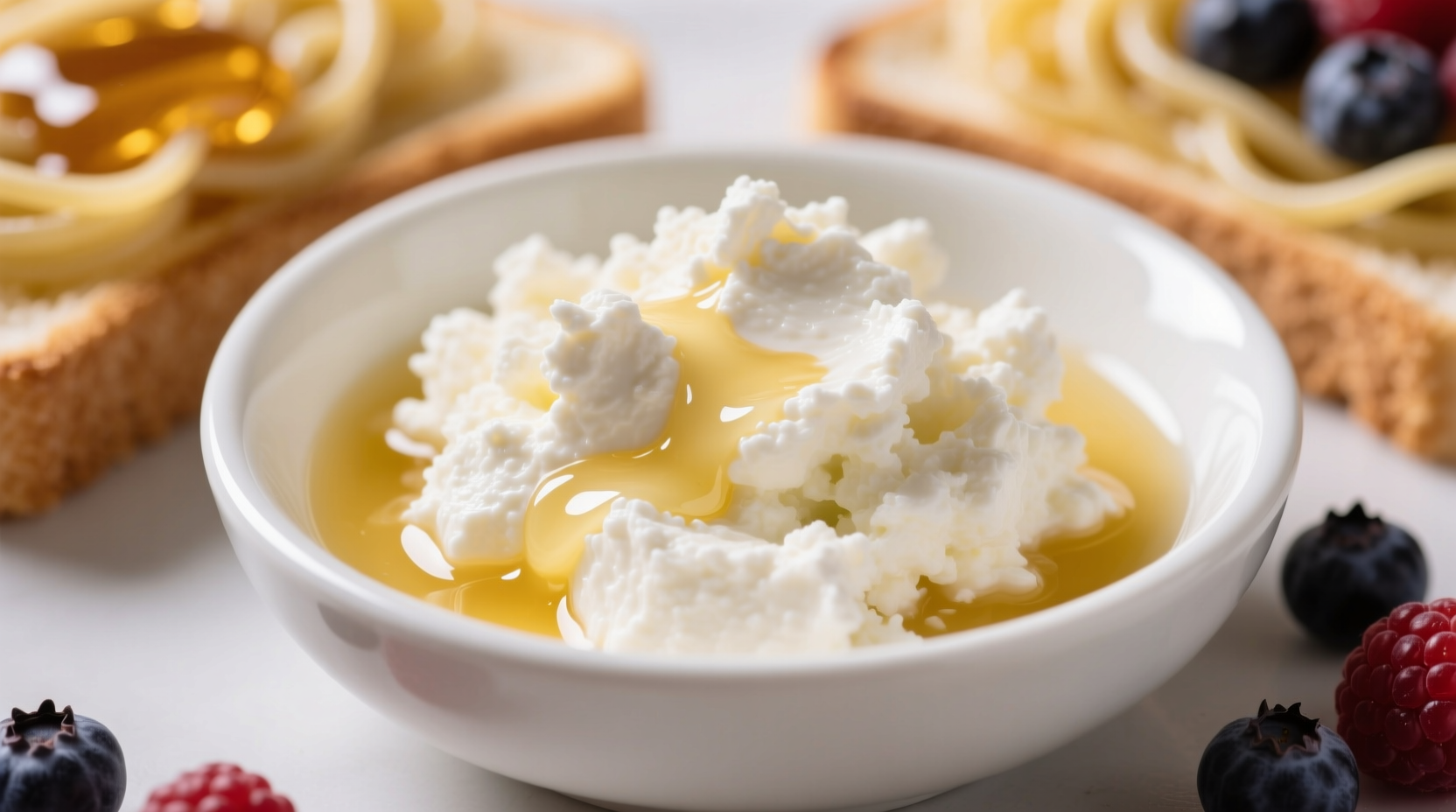Curious about what ricotta tastes like before trying it in your next recipe? You're not alone. Many home cooks hesitate to use this Italian staple without understanding its unique flavor profile. This comprehensive guide breaks down exactly what to expect when you taste ricotta cheese, how it compares to similar cheeses, and why understanding its flavor characteristics matters for your cooking success.
The Essential Ricotta Flavor Profile
When you take your first spoonful of fresh ricotta, you'll notice a delicate balance of flavors. Unlike aged cheeses with sharp, pungent notes, ricotta offers a clean, refreshing taste experience. The primary flavor notes include:
- Mild sweetness - A subtle natural sugar note from the milk
- Fresh milky flavor - Similar to sweet cream but less rich
- Subtle tanginess - A gentle acidity that refreshes the palate
- Clean finish - No lingering aftertaste
Quality ricotta should never taste sour, bitter, or overly salty. The flavor varies slightly depending on the milk source and production method, which we'll explore next.
Texture: The Other Half of the Ricotta Experience
Understanding what ricotta tastes like requires considering its distinctive texture. Unlike smooth cream cheese or the separated curds of cottage cheese, ricotta has a unique grainy-yet-creamy consistency:
- Moist but not watery - Properly drained ricotta holds its shape
- Delicate curds - Fine, soft particles that melt slightly on the tongue
- Light mouthfeel - Not dense or heavy like mascarpone
- Slightly granular - This is normal and expected
The texture directly influences how ricotta tastes. Its light, airy structure allows other flavors to shine through when used in recipes, making it incredibly versatile in both sweet and savory applications.
What Affects Ricotta's Flavor?
Several factors determine what ricotta tastes like in your specific experience. Understanding these variables helps you select the right ricotta for your needs:
| Factor | Impact on Flavor | What to Look For |
|---|---|---|
| Milk Source | Cow's milk: mildest flavor Sheep's milk: richer, tangier Goat's milk: distinctive tang Water buffalo: sweetest, creamiest |
Check label for milk type - crucial for authentic flavor |
| Production Method | Traditional: complex, nuanced flavor Commercial: blander, more uniform |
Artisan brands often specify traditional methods |
| Freshness | Fresh: clean, sweet notes Aged: develops sourness |
Use within 3-5 days of production for best flavor |
| Salt Content | Unsalted: pure milky flavor Salted: enhances other ingredients |
Choose based on recipe requirements |
According to the University of Vermont's Dairy Science program, traditional ricotta made from whey has a more complex flavor profile than modern versions made directly from milk. The whey-based method creates subtle flavor compounds that contribute to ricotta's distinctive taste (University of Vermont Dairy Science).
Ricotta vs. Similar Cheeses: Flavor Comparison
Many people confuse ricotta with other soft cheeses. Here's how the flavors differ:
- Ricotta vs. Cottage Cheese: Ricotta has finer curds, less salt, and a milder, sweeter flavor. Cottage cheese often has a more pronounced tang.
- Ricotta vs. Cream Cheese: Cream cheese is denser, richer, and more tangy. Ricotta is lighter with a more delicate milky flavor.
- Ricotta vs. Mascarpone: Mascarpone is much richer, buttery, and less acidic. Ricotta provides structure while mascarpone adds pure richness.
- Ricotta vs. Fromage Blanc: Fromage blanc is tangier and more yogurt-like, while ricotta maintains a sweeter profile.

How Flavor Affects Ricotta's Culinary Uses
Understanding what ricotta tastes like helps you use it effectively in recipes. Its mild flavor makes it incredibly versatile:
- Sweet applications: Ricotta's subtle sweetness shines in desserts like cannoli and cheesecake, where it provides structure without overwhelming other flavors.
- Savory dishes: In lasagna or stuffed shells, ricotta absorbs surrounding flavors while contributing its light texture.
- Breakfast options: Mixed with honey and fruit, ricotta's clean flavor creates a refreshing start to the day.
- Spreadable uses: On toast with olive oil and pepper, fresh ricotta provides a delicate base that enhances rather than dominates.
Chef Antonio Carluccio, in his book Italian Home Cooking, emphasizes that "the beauty of ricotta lies in its ability to be both protagonist and supporting actor in a dish" - a quality directly related to its balanced flavor profile.
Common Ricotta Flavor Misconceptions
Several myths persist about what ricotta tastes like:
- "Ricotta tastes like cottage cheese" - While similar in texture, ricotta is significantly milder and less salty.
- "Good ricotta should be very tangy" - Fresh ricotta has only a subtle tang; pronounced sourness indicates age or poor quality.
- "All ricotta tastes the same" - Milk source and production method create noticeable flavor differences.
- "Ricotta is just filler in lasagna" - Quality ricotta contributes essential flavor and texture that defines authentic Italian dishes.
Food science research from the Journal of Dairy Science confirms that traditional whey-based ricotta contains different protein structures than milk-based versions, directly affecting both texture and flavor release during consumption (Journal of Dairy Science).
Choosing Ricotta Based on Flavor Needs
Your recipe determines which ricotta flavor profile works best:
- For desserts: Choose whole milk ricotta with a slightly higher fat content for richer flavor
- For savory dishes: Part-skim ricotta works well as it holds shape better during cooking
- For fresh applications: Seek out local producers who make ricotta the same day
- For baking: Drain excess moisture to prevent soggy results while maintaining flavor
Remember that what ricotta tastes like changes when cooked. The heat causes subtle caramelization of milk sugars, enhancing its natural sweetness while reducing moisture content.
Tasting Ricotta Like a Professional
To fully appreciate what ricotta tastes like, follow these professional tasting steps:
- Temperature: Serve slightly chilled (55-60°F), not refrigerator-cold
- Texture check: Scoop with a spoon - it should hold shape but feel light
- First impression: Notice the clean, milky aroma
- Flavor progression: Initial sweetness followed by subtle tang on the finish
- Mouthfeel assessment: Fine curds that dissolve smoothly without grittiness
As you explore what ricotta tastes like across different brands and types, you'll develop a refined understanding of this versatile cheese's flavor spectrum - from the delicate sweetness of fresh sheep's milk ricotta to the clean neutrality of quality cow's milk versions.











 浙公网安备
33010002000092号
浙公网安备
33010002000092号 浙B2-20120091-4
浙B2-20120091-4